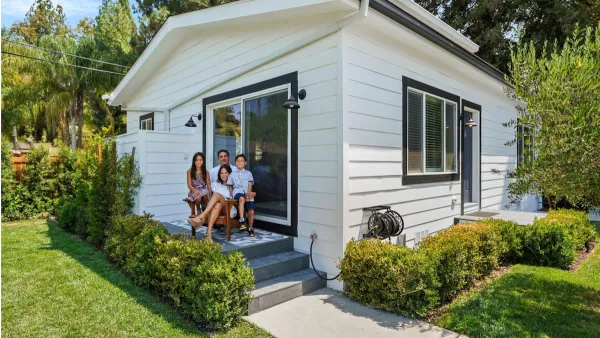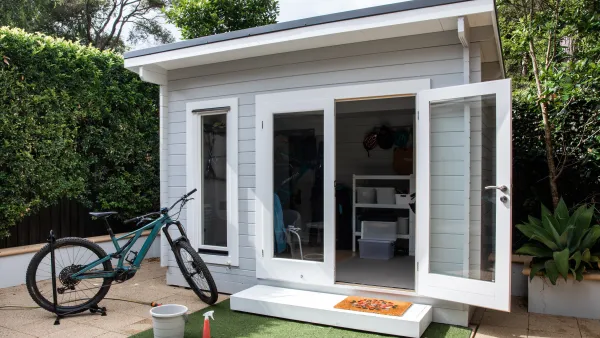The city hopes adjusting its regulations for accessory dwelling units will make the process more affordable for residents and help ease the city’s housing crunch.

The Denver City Council passed an amendment to its zoning code that makes the rules for building accessory dwelling units (ADU) more flexible in hopes of making ADU construction more affordable and feasible for the city’s residents.
As Desiree Mathurin explains in Denverite, the change is a result of recommendations from an ADU Advisory Committee created last year to determine barriers to ADU construction. “The goal of the committee was to look at some of the construction technicalities in the zoning code, including size and placement, and decide whether changing these rules would make ADUs easier to build.”
The committee found that “Tailoring the ADU construction rules around which neighborhood context they inhabit allows the ADUs to be a better fit for each neighborhood. And they make ADUs easier to build because now homeowners don’t have to worry about those uniform technicalities,” said Genna Morton, communications specialist with Community Planning and Development. Tailoring rules to each neighborhood can also reduce costs by letting homeowners build the type of ADU that fits best within the constraints of their lot and surroundings.
The new rules use existing Suburban, Urban Edge, and Urban designations to adjust ADU regulations. “For example, homes in Urban zoning areas typically have smaller lot sizes. With uniform ADU size requirements, some homeowners couldn’t build on their lots even if their neighborhood was zoned for an ADU.” Now, the regulations will take zoning areas into account to remove unnecessary barriers.
FULL STORY: City Council makes building ADUs easier by passing zoning code amendment

National Parks Layoffs Will Cause Communities to Lose Billions
Thousands of essential park workers were laid off this week, just before the busy spring break season.

Retro-silient?: America’s First “Eco-burb,” The Woodlands Turns 50
A master-planned community north of Houston offers lessons on green infrastructure and resilient design, but falls short of its founder’s lofty affordability and walkability goals.

Delivering for America Plan Will Downgrade Mail Service in at Least 49.5 Percent of Zip Codes
Republican and Democrat lawmakers criticize the plan for its disproportionate negative impact on rural communities.

Test News Post 1
This is a summary

Test News Headline 46
Test for the image on the front page.

Balancing Bombs and Butterflies: How the National Guard Protects a Rare Species
The National Guard at Fort Indiantown Gap uses GIS technology and land management strategies to balance military training with conservation efforts, ensuring the survival of the rare eastern regal fritillary butterfly.
Urban Design for Planners 1: Software Tools
This six-course series explores essential urban design concepts using open source software and equips planners with the tools they need to participate fully in the urban design process.
Planning for Universal Design
Learn the tools for implementing Universal Design in planning regulations.
EMC Planning Group, Inc.
Planetizen
Planetizen
Mpact (formerly Rail~Volution)
Great Falls Development Authority, Inc.
HUDs Office of Policy Development and Research
NYU Wagner Graduate School of Public Service





























